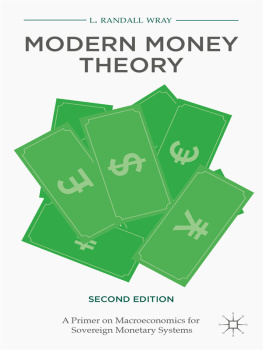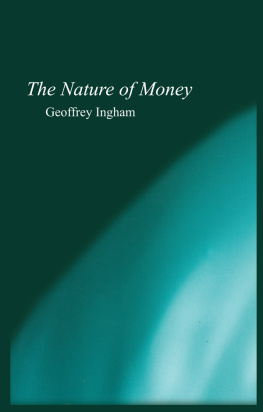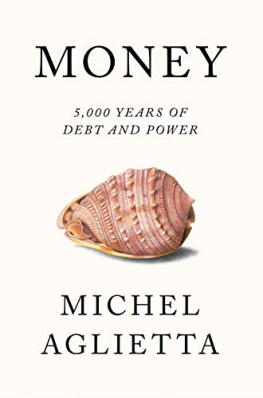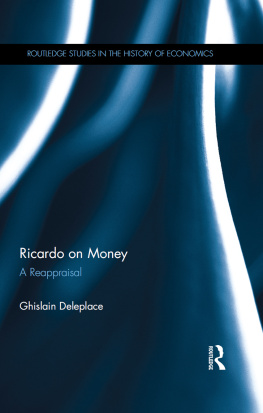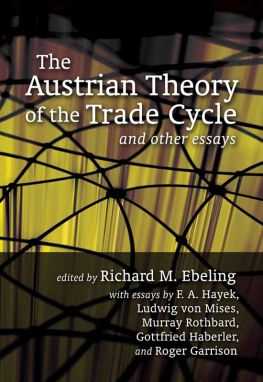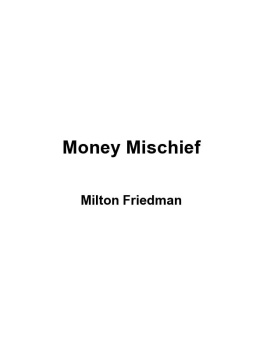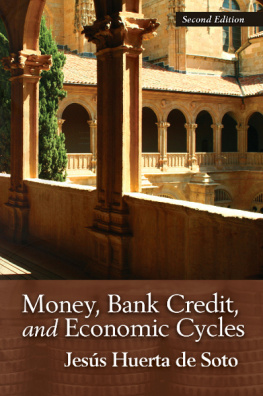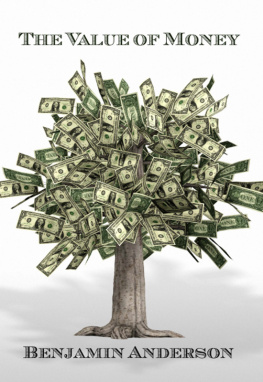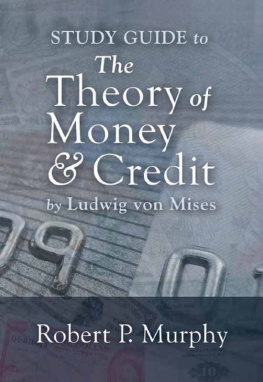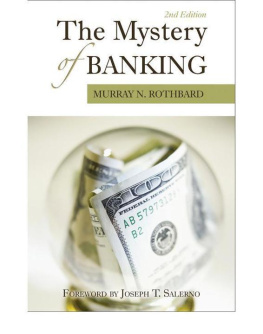MISES on
MONEY
Gary North

mises.org
ISBN: 978-1-6101-6247-0
Table of Contents
INTRODUCTION
Ludwig von Mises (1881-1973) made a major contribution to the theory of money with the publication of his book, The Theory of Money and Credit (1912). He was 31 years old. It was translated into English in 1924. It was updated in 1934. The 1934 edition was reprinted, without changes except for an appendix, in 1953 by Yale University Press. It had previously been published in England.
He followed this path-breaking book with what has proven to be one of the most important essays in the history of economic theory: Economic Calculation in the Socialist Commonwealth (1920). In it, he argued that without capital markets based on private ownership, socialist central planners are economically blind. They cannot know either the economic value or the price of capital goods. Therefore, they cannot know which resources should be allocated to meet the desires of consumers, including the State itself. He expanded this essay into a book, Socialism: An Economic and Sociological Analysis (1922). A second German edition appeared in 1932, the year before Hitler became Chancellor of Germany. This was the edition used to translate the English-language edition, published in 1951 by Yale University Press. Mises added an Epilogue, which began with these words: Nothing is more unpopular today than the free market economy, i.e., capitalism. It ended with these words: Not mythical material forces, but reason and ideas determine the course of human affairs. What is needed to stop the trend towards socialism and despotism is common sense and moral courage.
More than any other economist, it was Mises who offered the most detailed theoretical critique of socialism. But, as it turned out, it was not sound ideas, but the economic irrationality of socialist economic planning that finally undermined the envy-driven, power-loving, statist religion of socialism. Socialism by 1989 had bankrupted its most powerful incarnation, the Soviet Union. When it fell, socialist economists found themselves with few followers. Overnight, socialism had become a joke. Books on what Marx really meant filled the books for a buck bins in college-town bookstores. Socialist professors never had a plausible economic theory; they had only tenure. As the pro-socialist and millionaire economics textbook author Robert Heilbroner finally admitted in The New Yorker in 1990, Mises was right. Heilbroners ideological academic peers have not been equally honest.
Misess last major book was Human Action: A Treatise on Economics (Yale University Press, 1949; 3rd edition, Regnery, 1966: the edition I used for this study). Human Action presented a comprehensive theory of the free market on the one hand and economic interventionism by civil government on the other.
Mises wrote many books and articles. His main writings have been in English since 1949, when Human Action appeared, but hardly anyone has read all of them, including members of the comparatively small band of disciples who call themselves Misesians. The timing of the publication of Human Action could not have been worse. It was the year after the publication of Paul Samuelsons textbook, Economics, which went on to sell three million copies and shape economics students thinking without significant opposition for almost two decades. It is still in print. By 1949, the Keynesian revolution was in full operation in American classrooms outside of Chicago. In contrast, Mises was a little-known Austrian immigrant whose major theoretical contributions to economics were long forgotten, relics of an ante-bellum, pre-Keynesian world. He was teaching in an academically peripheral university that did not even bother to pay him out of its own funds. His salary was paid by a handful of supporters, most notably Lawrence Fertig. There Mises taught his graduate seminars until 1966, when he retired at age 85. He died in 1973, making him ineligible for the Nobel Prize in economic science. The next year, his former disciple, F. A. Hayek, shared the Nobel Prize with socialist Gunnar Myrdal. (It was said at the time that Hayek never expected to win it, and Myrdal never expected to share it.) Hayek won on the basis of his theory of the business cycle, developed in the 1930s, which was based almost entirely on Misess Theory of Money and Credit, and also for his theory of the free market as a transmitter of accurate information, a theory developed originally by Mises in Socialism, which had converted Hayek from his youthful socialist leanings, as he later said publicly. But Hayek had used a few charts in the 1930s. Mises never did. Hayek was clearly scientific; Mises clearly wasnt. Thus is academic performance rewarded by the economics profession.
In the war of ideas against monetary debasement and then socialism, Mises served as the lone Marine who led the initial assaults against the statists machine gun nests in academia. He did it from outside academias walls. The University of Vienna never hired its most distinguished economics graduate. Hayek was part of the second wave: Misess early disciples, who began volunteering for duty in the early 1920s. These included Lionel Robbins, Wilhelm Rpke, and several world-famous economists who by 1940 had left military service to become part of the diplomatic corps, seeking a cease-fire with the enemy. For this, they were rewarded well by the enemy: major publishing houses, academic tenure, and the honorary presidency of at least one regional economics association. Yet at age 85, Mises was still tossing grenades at the enemys bunkers. (Hayek also remained on duty in the field, but he was always more of a sniper.)
In summarizing Misess theory of money, I draw heavily on his two major works that dealt with monetary theory, The Theory of Money and Credit and Human Action, plus a few minor books. I cover five themes: the definition of money; the optimum quantity of money, and how to achieve it; the myth of neutral money and its corollary, stable prices; fractional reserve banking, and how to inhibit it; and the monetary theory of the business cycle. They are closely interrelated. Misess system was a system.
I refer repeatedly to the Web site of the Liberty Fund, which has posted all of The Theory of Money and Credit. Warning: anyone who can actually read the Table of Contents on this site is doing better than I.
http://www.econlib.org/library/Mises/msTContents.html
The books pages are not numbered on the Web edition. Usually, several chapters are included in each bloc of text from the book. If you want to locate any word or phrase in the text, I suggest that you read the text on-screen. Then use the Google Toolbar. This is a highly useful tool that I use daily. It highlights any word or phrase in HTML, allowing you to locate any word in a few seconds: a rapid scrolling until you see the yellow highlighted word. Download the program at www.google.com/about.html. It is on the left-hand side of the screen. (It works only with Internet Explorer.)
A suggestion: do not surrender to the temptation to skip over block quotations from Mises. To understand what Mises believed, you must read Mises carefully. Do not rely on my comments, which are there only to help you identify and better understand the most important themes in Misess exposition on money.
A warning: you may think you know what Mises taught about money and banking. Unless you have read the relevant material more than once, you probably have confused Misess ideas with something you read in a hard-money newsletter, now defunct, back in 1981.



